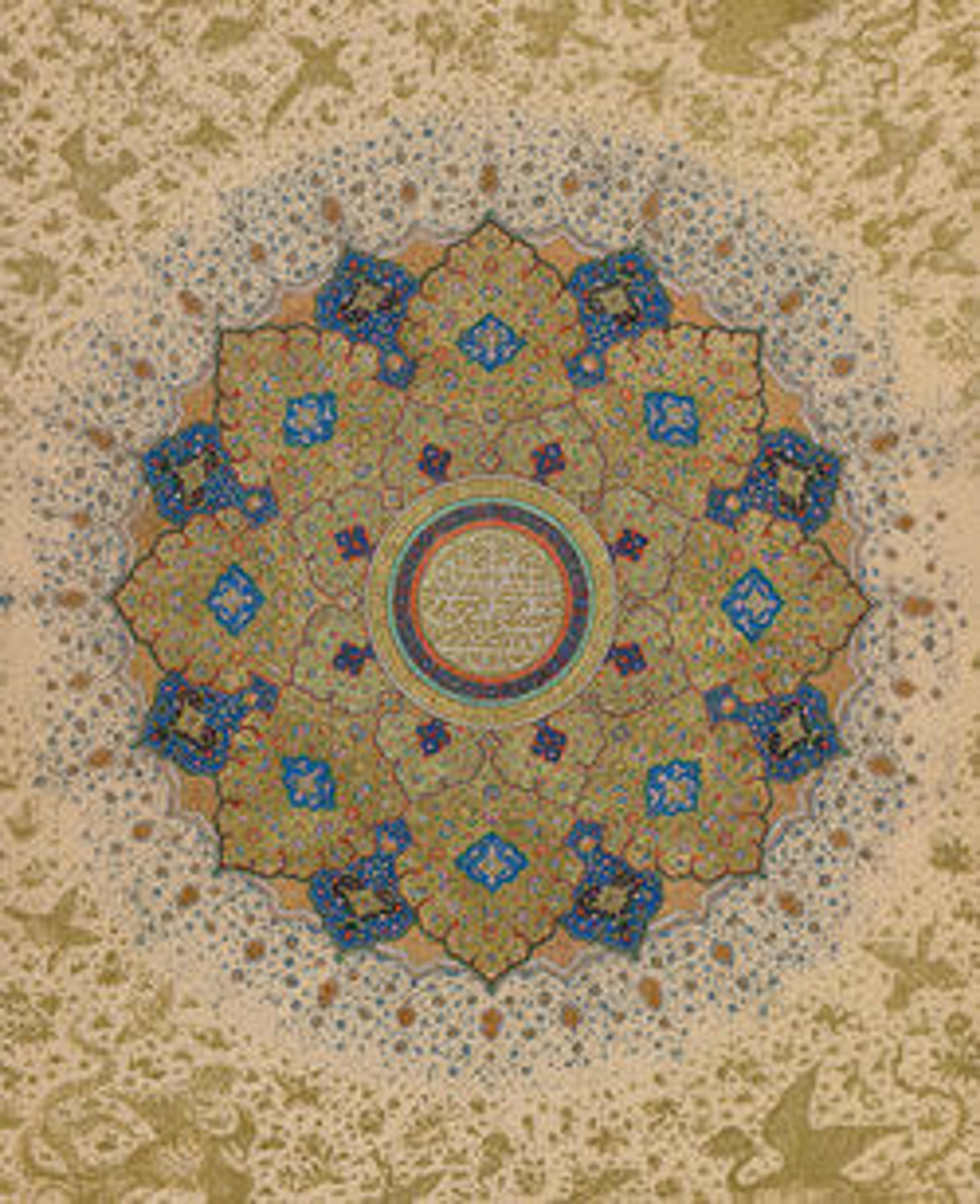Carpet with a Compartment Design
This magnificent jewel-colored carpet, with its elegant, curvilinear "compartments" based on a geometric star pattern, is filled with creatures borrowed from Chinese art, such as the dragon and phoenix in combat. The benevolent phoenix has its counterpart in Persian lore, where it is known as the simurgh, also a wise and protective bird. Other compartments contain decorative arrangements of Chinese ch'i-lin and flying geese, as well as the purely Islamic arabesque. The border with its medallions and cartouches reflects those of Safavid bookbindings, which also make great use of ribbonlike Chinese cloud bands, by now thoroughly assimilated into Persian art. With its fine weave (550 knots per square inch), silk foundation, and the close relationship between its elaborate pattern elements and the art of the book, it seems likely that this carpet was designed in the book atelier working in the service of the shah.
This carpet has been reduced in length. A complete carpet woven from the same cartoon belongs to the Musée Historique des Tissus in Lyon, France.
This carpet has been reduced in length. A complete carpet woven from the same cartoon belongs to the Musée Historique des Tissus in Lyon, France.
Artwork Details
- Title:Carpet with a Compartment Design
- Date:first half 16th century
- Geography:Made in Iran
- Medium:Silk (warp and weft), wool (pile); asymmetrically knotted pile
- Dimensions:Rug: H. 196 in. (497.8 cm)
W. 134 in. (340.4 cm)
Tube: H. 146 in. (370.8 cm)
Weight: 79 lbs. (198 lbs. rolled on tube. tube is 119 lbs. empty)
Diam. 20 in. (50.8 cm) - Classification:Textiles-Rugs
- Credit Line:Frederick C. Hewitt Fund, 1910
- Object Number:10.61.3
- Curatorial Department: Islamic Art
More Artwork
Research Resources
The Met provides unparalleled resources for research and welcomes an international community of students and scholars. The Met's Open Access API is where creators and researchers can connect to the The Met collection. Open Access data and public domain images are available for unrestricted commercial and noncommercial use without permission or fee.
To request images under copyright and other restrictions, please use this Image Request form.
Feedback
We continue to research and examine historical and cultural context for objects in The Met collection. If you have comments or questions about this object record, please contact us using the form below. The Museum looks forward to receiving your comments.
